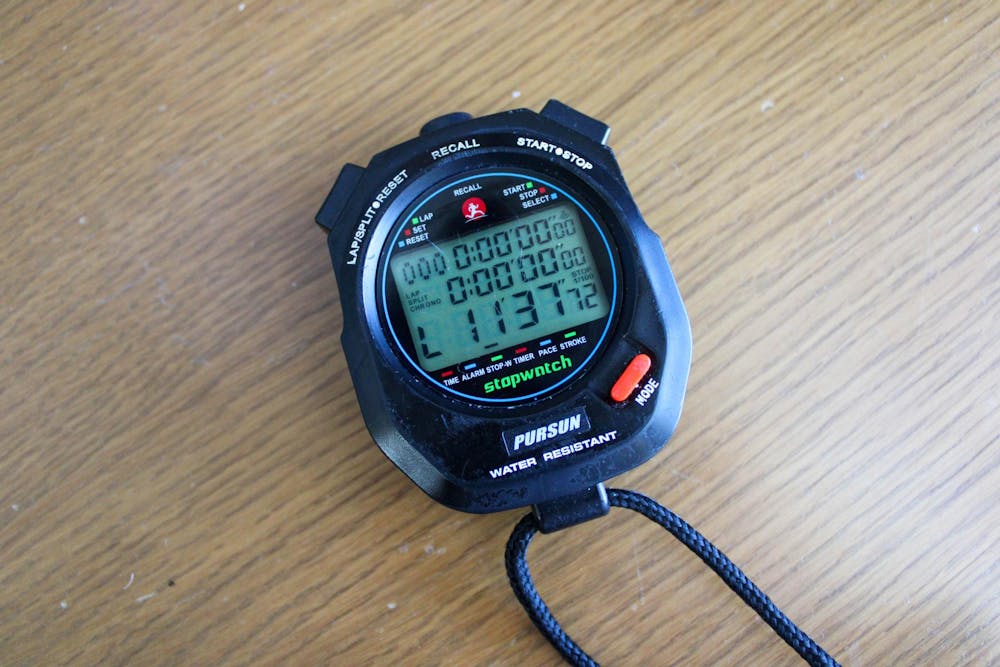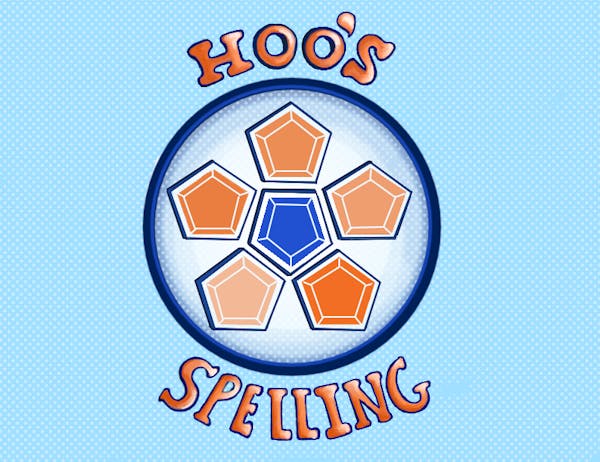On any given day around Grounds, passersby are guaranteed to see runners amok. Whether it be solo joggers cramming in 10 miles before class or an evening gaggle chatting as they trot along, there is a very distinct culture for recreational running at the University.
While unsurprisingly, there is a plethora of club running offerings for those of advanced speed and stamina, students find the club options for beginner runners — or just those on the slower side — to be strikingly slim. To remedy this, Slow Run Club at U.Va., the new addition to the University’s running scene — is making space on the sidewalk for runners outside of the typical stereotype.
The Slow Run Club at U.Va. meets three times a week — Mondays and Tuesdays at 6 p.m. and Fridays at 5 p.m. According to Longley, the runs tend to hover around the 1.5- to 2-mile range, at anywhere from an 11- to 12.5-minute pace per mile. While initially only a few people showed up to run, after chalking all around Grounds, the club’s runner count reached the double digits in mid-September.
Kate McCray, founder of Slow Run Club at U.Va. and fourth-year College student, first came up with the idea for the organization in the middle of this past spring semester. On the mend from a serious calf injury, she had come across tons of running club content on her Instagram. Once McCray had recovered and hoped to return to running, she wanted to get involved in one herself. However, she found that the majority of the University’s running clubs were tailored towards runners with faster speeds and built-up staminas. Noticing this discrepancy, she decided to take initiative and create one.
“I wanted to create a space where people could come and run, just to run,” McCray said. “And struggle with [slower] people, not alongside people who are running five-minute miles.”
McCray first temperature-checked the student body’s interest in a slow-running organization on Yik Yak. To her surprise, McCray said that the idea received hundreds of upvotes. Feeling encouraged, she started an official Instagram account for the club and started scheduling and posting about runs. Today, that account sits at 78 followers.
Autumn Longley, vice president of Slow Run Club at U.Va. and fourth-year College student, became intrigued by the idea of this organization through that initial Yik Yak post. While she had tried getting into running before — mostly on the treadmill at her apartment — she was never able to stick with it. After seeing the post, she felt inspired and instantly followed the Slow Run Club’s account on Instagram.
“[I] followed [the Instagram account] because I thought that this would be a really fun thing for me … I've never been able to keep up with [a] group [of runners] before,” Long said. “Knowing that there was an actual inclusive club at U.Va. immediately brought back my spark and love for running.”
Zoe Lilly, chief organizing officer for the Slow Run Club at U.Va. and fourth-year College student, finds that keeping these shorter distances and slower paces is essential for making sure the space is inclusive and accessible to lower-level runners. Instead of breaking into pace groups like in larger clubs, the Slow Run Club strives to keep everyone herded together, helping to foster a strong community and support system for the runners.
“We all stick together when we run,” Lilly said. ”We take breaks every once in a while, and more often if people need it. It just feels like we're all there to lift each other up.”
This notion of accessibility is what draws members to the club. Third-year College student Emily Frost got into running as a way to explore Dublin while she studied abroad during the summer. Though she had wanted to try her hand in the running scene around Grounds, she found the University’s running culture to be intimidating. However, after recently hearing about the Slow Run Club from her sorority sister, she has started attending the triweekly runs.
“At a place like U.Va. … you're surrounded by people who have been doing things like running for a long time and are very good at them,” Frost said. “I'm glad that Slow Run Club provides a place for beginner runners to just connect, or even non-beginner runners who just start on the slower side.”
Beyond the runs themselves, Longley emphasizes that the Slow Run Club at U.Va. has orchestrated many social events, including tailgates, trips to Carter’s Mountain for Sunset Series and post-run coffee adventures as a way to celebrate their accomplishments.
“[Slow Run Club] just felt more like a community than the other run clubs that are on Grounds,” Longley said.
Undoubtedly, the most important contribution of the Slow Run Club at U.Va. is the space and validation it provides for people outside of the traditional definition of a runner. Despite it only being its second semester in existence, this club has left such a mark on its members.
“If you can walk at a pace where you’re picking up one foot … then you’re a runner,” Lilly said. “It doesn’t matter how fast you’re running.”







